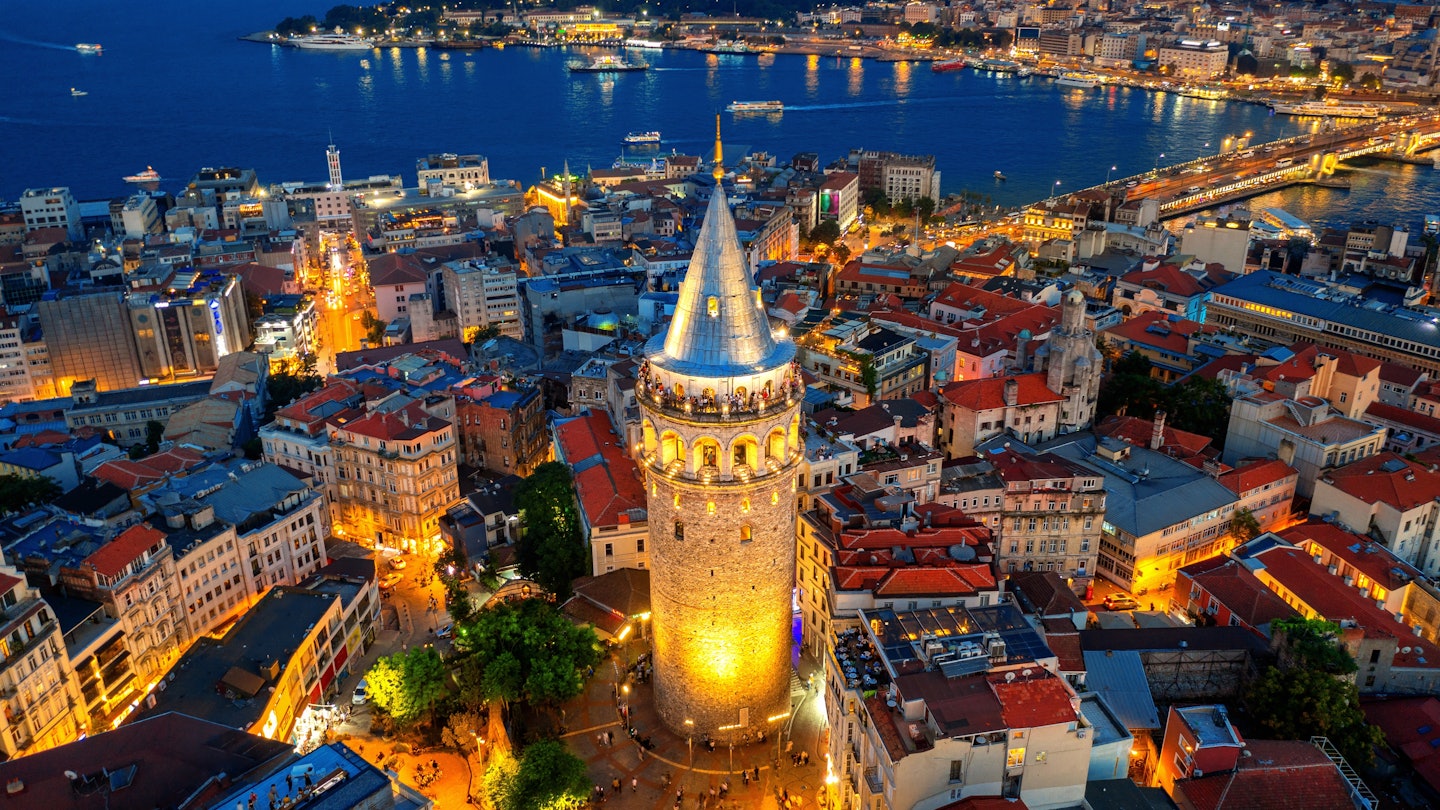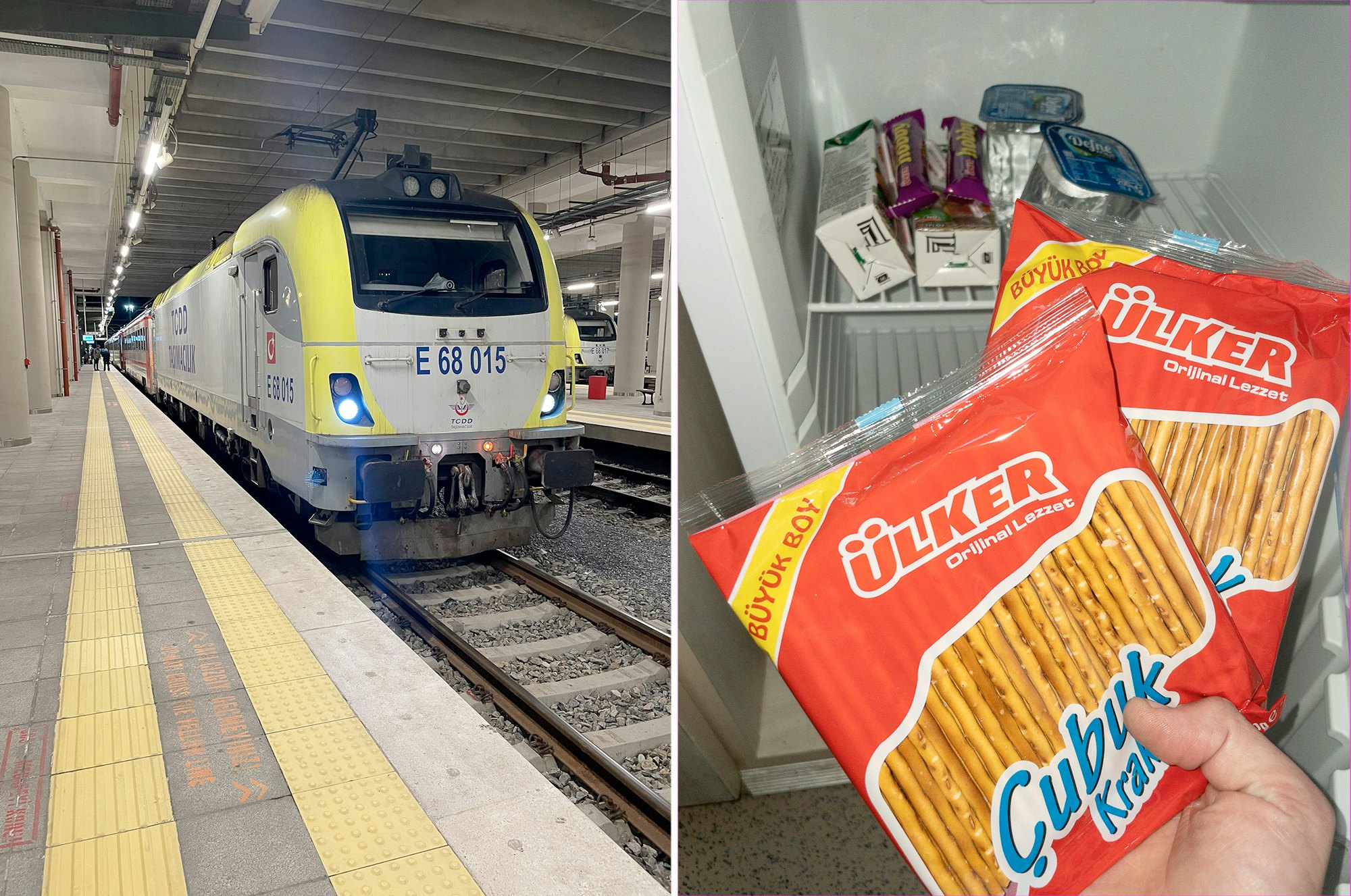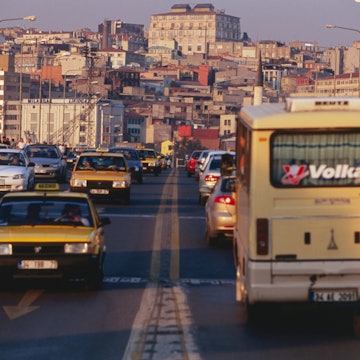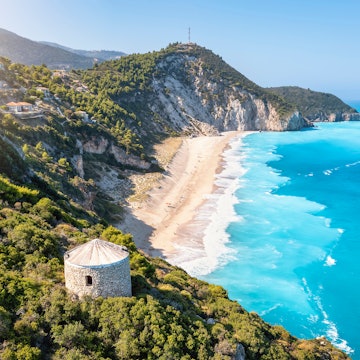
Enjoy a cross-border adventure on the night train from Istanbul to Sofia

Oct 10, 2025 • 10 min read

Dine in one of Istanbul's many excellent restaurants before boarding your overnight train to stunning Sofia. Shutterstock
From my home in London, England, I write and speak for Lonely Planet about travel and trains across Europe. This sleeper train journey combines my favorite things: railways through delightful parts of Europe, new adventures and a return to the chaotic excitement of Istanbul and Bulgaria's chilled capital, Sofia.
Why you should take the night train
For those prepared to seek it out, the Istanbul-Sofia Express (İstanbul-Sofya Ekspresi in Turkish) offers unforgettable cross-border adventure – think of a comfortable environment, late-night passport checks and stops at remote-feeling towns. This train departs from one of the world’s great cities into European Türkiye, threading across fortress-like frontiers into Bulgaria and crossing mountain passes before arriving in underrated and very affordable Sofia. A night in the Yatakli Vagon (sleeping car) delivers as a stand-alone journey, an add-on to a city break or a celebratory post-pandemic ramble across continents.
What you need to know before your trip on the Istanbul-Sofia Express
Make sure to stock up on food and drink
While sleeper compartments on the train are pre-stocked with a few candy bars, pretzel sticks and small cartons of water, there is no catering on the train or at Halkali station, so eat before you leave. You’ll have endless choices for a sustaining dinner in Istanbul, including traditional Turkish staples and fish dishes for €20-30 Euro (US$21-31) (including drinks). Istanbul is also packed with places to buy tasty pastries, baklava and other supplies you may need.
A coffee and freshly baked banitsa (traditional Bulgarian pastry cheese pie) on arrival at Sofia station will cost €3 (US$3.10), or more if you head for into the city to a well-known outlet like Hlebar (ХлеБар).
How to get your tickets
A bed in a four-berth compartment costs €36 (US$37), with a bed in a two-berth sleeper running you €41 (US$42). If you’d like the whole sleeper berth to yourself the cost is €75 (US$78) when booked at Sirkeci station in Istanbul. If you book through DiscoverByRail, expect to pay around €115 (US$119) – which includes the peace of mind of a guaranteed bed in advance. Tickets are delivered to your hotel in Istanbul.
Public transport in Istanbul and Sofia
With the prepaid Istanbulkart travel card, the regular fare of €1 (US$1.03) from any station in the city to Halkali is reduced by 40%. A single fare of €0.80 (US$0.82) on the Sofia metro will get you from Central Station to the key interchange of Serdica, the airport or anywhere else on the network.
Accommodations at either end on the trip
A mid-range hotel in range of Istanbul's key sights starts at €120 (US$124). If staying in cheaper Sofia, this will be more like €65 (US$67).

Why train lovers appreciate the Istanbul-to-Sofia overnight route
Considering it’s designed as a train to be taken in the dark, while asleep, this route over-delivers on adventure. Leaving Istanbul, you’ll cross ancient landscapes and borders, then take in superb scenery as you chug through Bulgaria’s mountains. From Sofia, pathways open up to further epic journeys across Europe.
Day one: Take a whirlwind tour of Istanbul
One of the world’s most popular city destinations, Istanbul is a wonderful place to start any trip. If you have just a few hours to spare, head to Hagia Sophia, the Roman emperor Justinian’s great cathedral that’s today designated as a mosque – and which remains as stunningly beautiful and as politically charged a place as ever.
If you have a full day, consider one or two of the other key sights of the Sultanahmet neighborhood, including the Basilica Cistern, the Blue Mosque and the National Archaeological Museum. Have more time? The city is yours to explore, from the cultural big hitters of Karakoy like SALT Beyoğlu to the youthful Asian-side neighborhood of Kadıköy. Consider a boat ride up the Bosphorus Strait to the edges of the Black Sea or to the Princes Islands in the Sea of Marmara to take the weight off your feet.

Day two: It’s train time
Unless you’ve arranged a ticket in advance, a visit to the Turkish Railways (TCDD) sales counter at Sirkeci station is the starting point for most Istanbul-to-Sofia travelers. Beyond the ticket office, Sirkeci is worth a nose around. The atmospheric and historic start-and-finish point of the Orient Express and other Europe-bound international services, it today remains a hugely busy place, where it feels like half the city is in transit via the subway and heading for ferries at nearby Eminönü.
With a nostalgic sense of faded glamor, the silent ground-level platforms of the main station – where the tracks have been removed as part of a slow renovation – offer a stark contrast to the thronged tunnels serving the suburban lines beneath. These lines are a necessary part of the journey today: the Istanbul-Sofia Express leaves from Halkali station on the western (European) outskirts of the city.
Halkali is at the end of the Marmaray railway that runs underneath Istanbul, connecting the European and Asian sides of the city in the process. So wherever your starting point, you must first travel on one of these frequent commuter services. If you’re starting around Sirkeci, this journey takes 45 minutes. The Marmaray line is a pleasant if crowded service that emerges above ground just outside the ancient Theodosian Walls that once repelled would-be invaders from the city (then called Constantinople). From there, it runs along the shores of the Sea of Marmara, more than likely bathed in the golden evening light for which Istanbul is renowned.
Boarding for the night train begins at Halkali an hour or so before departure, and while you can arrive up to just a few minutes before, it’s more relaxing to get there with time to spare.

Depart Istanbul and get comfortable on board
Time: 8.45pm
A shout of “Sofia!” directed toward the no-frills waiting room at Halkali is the cue for boarding to commence. After a baggage x-ray and on-platform ticket check by the train manager, passengers are directed to their compartment. The train consists of two Europe-bound night trains hauled as one service: carriages heading for Bucharest in Romania detach once the train is in Bulgaria, and head north from there.
Note that departure times can vary depending on what time of year you travel. The correct departure time of your train will be written clearly on your ticket.
On board, compartments are comfortable, functional and air-conditioned, dating from the 1990s. You’ll make up your own bedding when ready to turn in. There’s no wi-fi on board but there is a power socket. If you need assistance, a train manager moves through regularly. On my journey, the train staff didn’t speak much English, but the international language of rail travel was enough to manage any issues.
The train leaves promptly in order to reach the border at the same time as the eastbound service, rumbling through the evocatively named region of Thrace. As on many night trains threading their way by deserted stations, through snoozing cities and past midnight freight movements, stops and starts are a part of the journey. In fact, for large sections of its 570km (355 miles) route, this train runs on a single track line, with passing loops to allow for two-way running. Ideally, the gentle rocking of the carriage will lull you to sleep. Earplugs also help.

Wake up to pass through border checkpoints
Time: 2am(ish)
This train does not offer an undisturbed night – which is all part of the fun.
Traveling in 2023, I undertook the train’s memorably inconvenient immigration process at Kapıkule, on the Turkish - Bulgarian frontier. Here, sleepy passengers had to disembark from the train, take a stroll along the platform and queue up to get a stamp in their passports – before waiting for everyone else on board to do the same. Once everyone has their stamps, you can get back on and go back to sleep. The whole thing took around an hour, followed by a slow crawl out of Türkiye and into Bulgaria and the European Union. Together with its Bulgarian counterpart, this forms Europe’s busiest land-border crossing. It’s also close to a shared border with Greece.
As of 2025, these checks are now being undertaken 20km from the border at Edirne (home to the 16th-century Selimiye Mosque, one of the wonders of Ottoman Islamic architecture), at the city’s new station building. Same formalities, different desolate late-night station platform.
Even at night, this section of the trip has an edgy, fortified feeling to it, with lines of razor wire and armed guards surveying the scene. Since this route is one of the key borders crossed by migrants from Asia and Africa, the purposes of the fences were clear and thought-provoking to those of us who have the privilege of moving freely between them.
Entering Bulgaria is a different process…and takes just as long. Guards enter the train at Svilengrad, the first stop in Bulgaria, then – slightly terrifyingly – take away passports for inspection and stamping before they are returned.
Largely because of these border controls, delays are highly possible. So it is sensible to build some slack into any plans for onward connections from Sofia.

Get a few hours of sleep
Time: 3.30am - 6.30am
Once you’re through Bulgaria, you’ll have the chance to grab a few hours of sleep before an early-morning arrival into Plovdiv. Bulgaria’s cultural capital is a superb place to take a break from the train (there are later services to reach the capital, though you’ll need to buy an additional ticket). Plovdiv (ancient Philippopolis) is Europe’s oldest continuously inhabited town and has a dramatic Roman amphitheater still in use today, a beautifully preserved Old Town filled with cobbled streets and charming 19th-century buildings, and a huge choice of cute cafes and inexpensive bakeries. On its outskirts, small hills offer a variety of panoramic views.
If staying on board, the Istanbul carriages are hitched to a Bulgarian intercity service for the final few hours to Sofia. The scenery between Plovdiv and Sofia is an easy-on-the-eyes mix of hills, woods and water – the perfect way to ease into the morning. The train attendant will wake everyone up, and offer instant coffee and tea in exchange for any leftover Turkish lira. The tracks skirt the Rhodopi and Rila Mountains, distant at first before an ascent through a forested pass and the last downhill leg toward Sofia.
Arrive in Sofia
Time: 9.35am

After a long and sleep-interrupted night, travelers may wish to remain in one place for a while. Which is fortunate, since there’s plenty to do in the Bulgarian capital. Big hitters – including the soaring neo-Byzantine Aleksander Nevski Cathedral, the National Museum of Natural History and the wildly varied National Gallery Quadrat 500 – will root you in one of Europe’s most underrated capitals. For a deeper dive, explore Bulgaria’s contemporary art scene at Sofia City Art Gallery, head to Fabrika Daga for a tempting brunch and explore the city’s craft beer scene at Kanaal or other cool bars and restaurants.
When is the best time of year to do it?
Summer is peak season for a reason and the sun-drenched landscapes and city streets are hard to resist. You'll need to book tickets well in advance as they sell out quickly between June and August. Outside of these months, the train is quieter but can still sell out occasionally.
If you're traveling before May or after September, pack warm clothes for the chilly, late-night passport queues. The fall colors are truly stunning as you pass through the Bulgarian countryside, so leaf peepers may want to visit between September and November. Istanbul tends to be busy year-round but it's less crowded at this time too.
How much does it cost?
Ticket for a four-bed sleeper: €36 Euro (US$37)
Ticket for a private sleeper: €75 (US$78)
Accommodation in Sofia or Istanbul: €80-120 (US$83-124)
Local restaurant in Istanbul: €20-30 (US$21-31)
Coffee and a banitsa in Sofia: €3 (US$3.10)

Where do the tracks lead from here?
Local travelers I spoke to recommended the narrow-gauge journey from Septemvri and Dobrinishte as a very scenic backcountry detour just off the Plovdiv-Sofia line. From Sofia, Bucharest is the most obvious onward destination for travel further into Western Europe. The 10-hour train runs directly in summer but requires a change close to the border at other times of the year. Belgrade, Serbia and Thessaloniki in Greece can be reached via more challenging connections.















